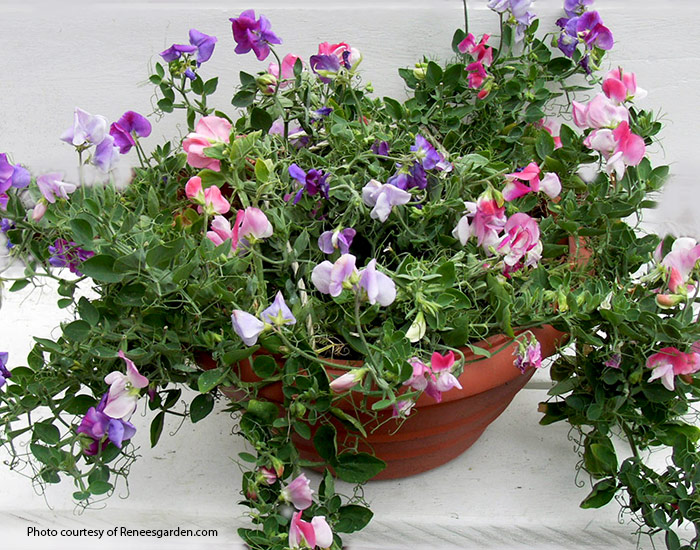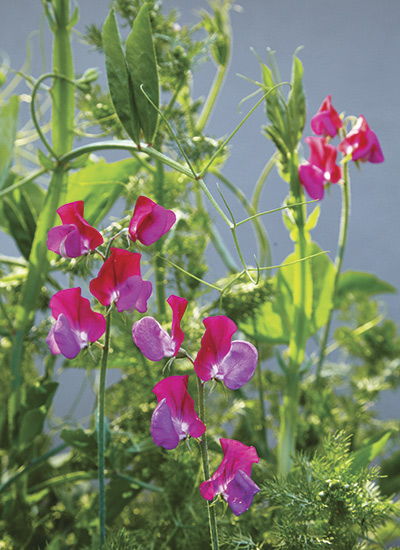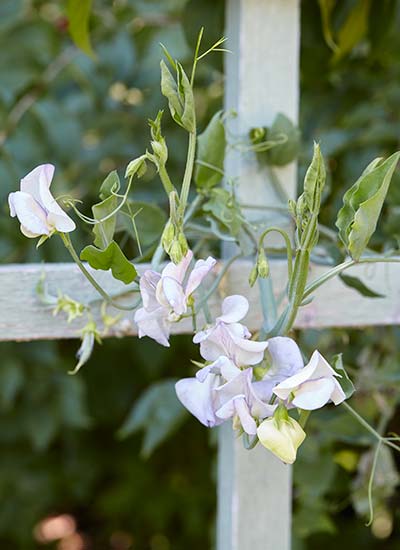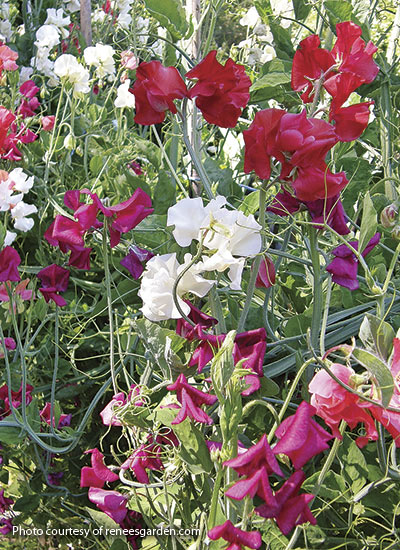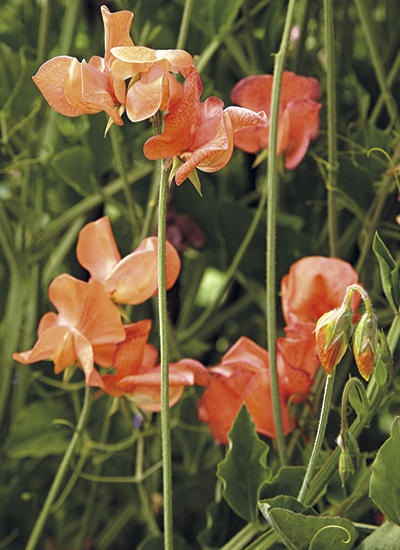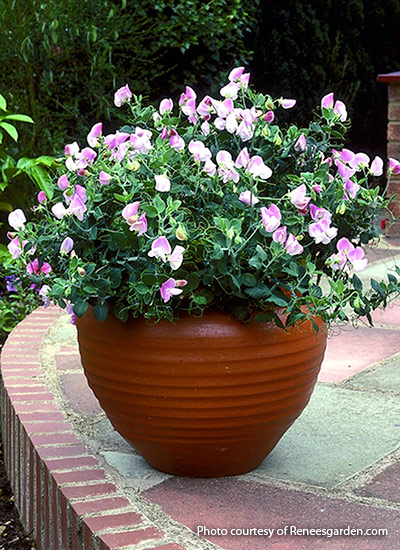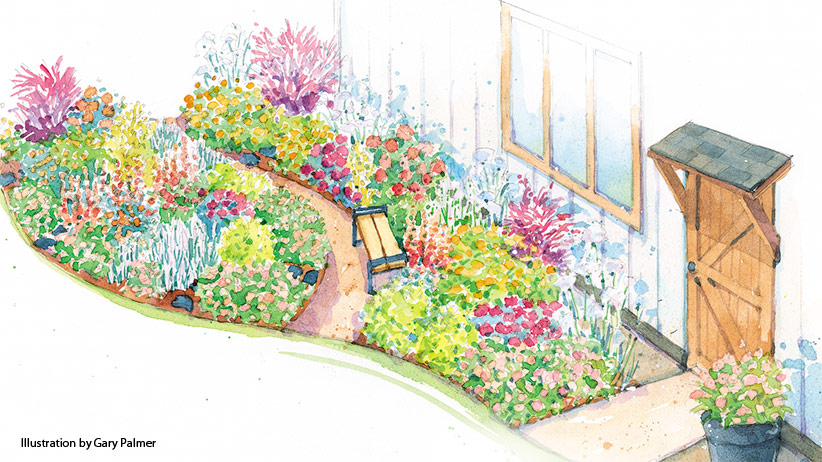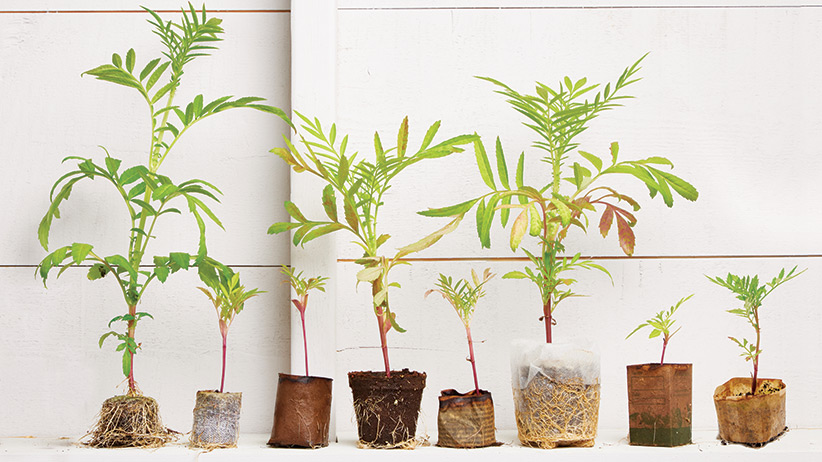
Sweet peas are fragrant annual flowers
The botanical name for sweet pea, Lathyrus odoratus, literally means “fragrant pea.” Just take a stroll through any garden containing these wonderfully sweet annuals, and you’ll know why. The intoxicating, honeylike aroma of the flowers is amazing. Careful, though. Unlike edible garden peas, sweet peas are poisonous.
Sweet pea flowers are available with either smooth or ruffled petals in shades of pink, red, maroon, purple, lavender, salmon, peach, cream and white, not to mention bicolors. The scented blossoms make long-lasting cut flowers.
You Might Also Like:
Tips for Growing a Fragrant Garden
10 Fragrant Flowers for Your Garden
Fragrant Tree Peonies
There are two types of sweet peas:
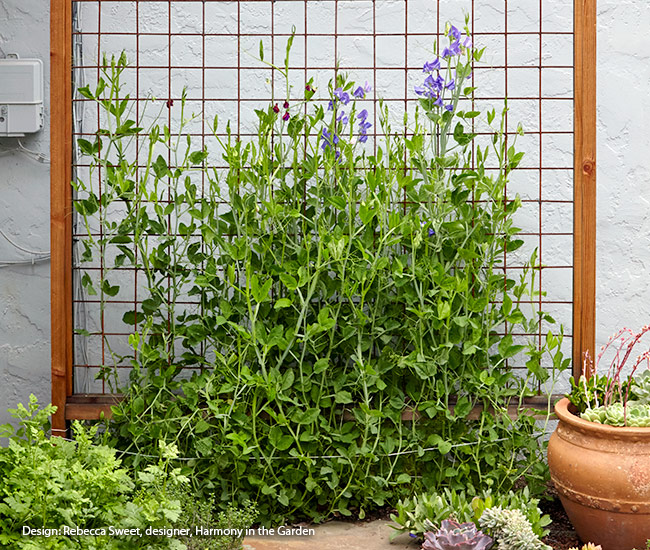
Vines that climb by wrapping their tendrils around supports
Vine-type sweet peas are 5 to 6 feet tall in most cases but can reach 8 or 10 feet in mild, coastal climates. They’re perfect for screens and backdrops as long as they are given a tall support, such as stakes, string, netting or fencing. It’s a good idea to plant 2- to 3-foot-tall annuals in front to cover bare lower stems.
Try these vining sweet peas
Dwarf, bush types that do not climb
Bush types are freestanding, growing only about 12 to 18 inches tall, so they’re excellent in beds, borders, hanging baskets and containers.
Try these bush sweet peas
Growing sweet peas
Sweet peas prefer cool weather, so they may start to wither with higher summer temperatures. Although you can use heat-tolerant cultivars, such as ‘Old Spice’ and ‘Cupani’s Original,’ an alternative is to tear the vines out and replace them with other annual vines. Or plant them together with morning glories, which will eventually overtake their partners and cover up the fading sweet peas.
Plant sweet peas in a sunny, well-drained site that has a neutral to slightly alkaline pH (7.0 to 7.5). If the soil is acid, sprinkle ground limestone on top until it looks like a powdered brownie, then work it in.

Planting sweet pea seeds
Annual sweet peas are picky — they have to have everything “just right.” The seeds can’t be too hot or too cold, planted too deep or too shallow. They want warm soil to germinate, but need to start early enough to grow strong, deep roots.
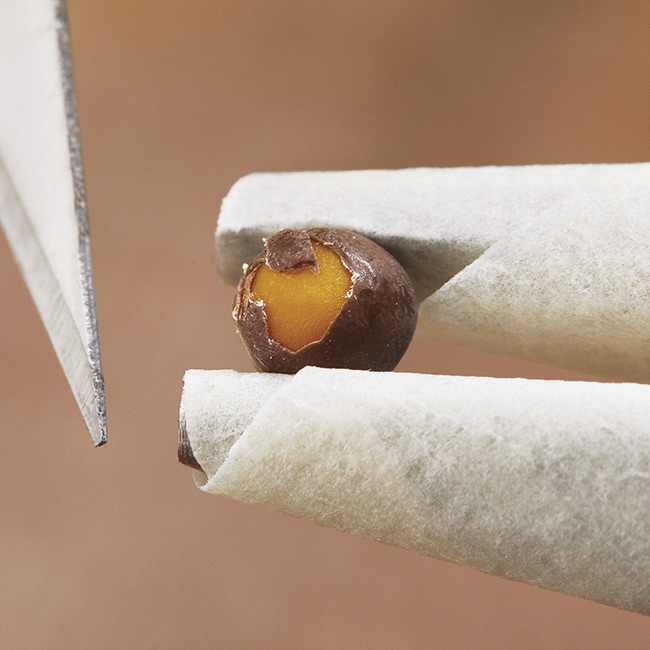
How to start sweet pea seeds indoors
In colder zones, starting seeds indoors could be an option.
- About six weeks before the last frost date in your area, soak sweet pea seeds in warm water for 24 hours or nick the seed coat with a nail clippers or a sharp blade so the seed can germinate easier.
- Since sweet peas do not like to be transplanted, plant seeds in peat pots that can be set into the ground outdoors without disturbing the roots and will break down in the soil.
- Sow three seeds per 3-inch pot, about ½ inch deep, in general purpose potting mix.
- After they have germinated and have grown about 4 inches tall, snip off the weaker two plants. Cut rather than pull so you don’t risk damaging tangled roots.
- When seedlings have 4 sets of leaves, pinch the growing tip to encourage branching.
- When temperatures are consistently above freezing at night, plant sweet peas outside.
- Before planting each pot, gently break down the top portion of the peat pot so it doesn’t stick out above ground and wick moisture from the roots.
You Might Also Like:
Starting Seeds Indoors
How to Perfectly Time Your Seed Starting
Seed Starting Tips
Direct sow sweet pea seeds outside
The best time to plant sweet pea seeds outside depends on your area's typical winter weather: If it is mild with low temperatures around freezing, sow sweet pea seeds in fall; if it is harsh and can get well below freezing for long periods of time, wait for spring, but plant as early as you can work the soil. Either way, it’s a good idea to prepare the planting bed in fall. Here's how:
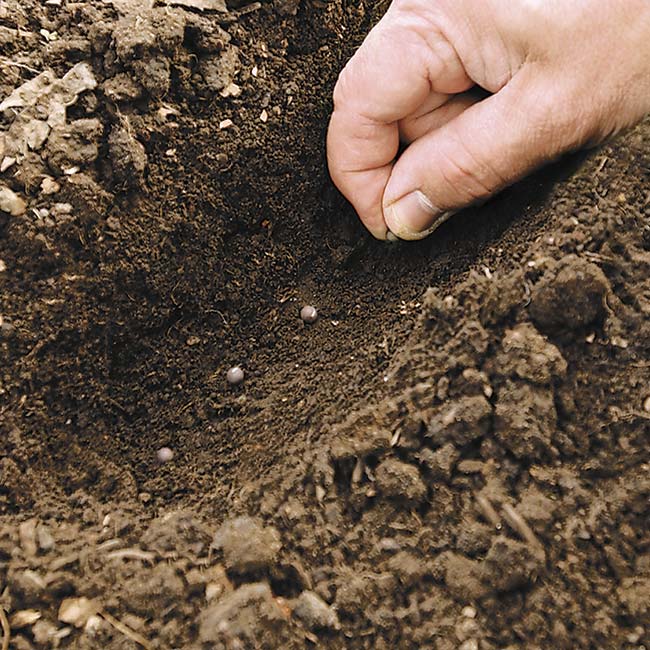
- Dig a 12-inch-deep trench.
- Backfill the trench with 6 to 8 inches of compost, followed by a few inches of topsoil. This will leave a slight depression ready for planting seeds now or in very early spring.
- Sow seeds one inch deep and one inch apart.
- When sweet pea seedlings are about 4 inches tall, thin seedlings to a distance of 5 or 6 inches.
- As the sweet peas grow, gradually fill in the depression by mounding soil around the stems.
You Might Also Like:
Cool Season Vegetables to Plant in the Fall
How to Sow Seeds Outdoors in Winter
Planting sweet peas with manure
Here is an old-fashioned planting technique that can meet the sweet pea’s challenges. This process warms the soil enough to germinate the seeds while the weather is still cool enough to keep the growing plants happy. And because it places rich nutrients deep below the plants, it encourages them to develop roots that will help the plants endure hot weather well into summer.
- Manure is the key. In late fall, about the time you plant your spring bulbs, select a sunny site for your sweet pea bed. Dig a trench 24 in. deep and as long and wide as you want the bed to be. Then add an 18- to 20-in. layer of fresh horse manure, tamping it down firmly with the shovel to remove air pockets.
- Cover the bed with a mix of half compost and half soil. When the ground warms to around 50 degrees in spring, bacteria will start digesting the manure, generating bottom heat for germination and a good supply of fertilizer to encourage deep roots that will help the plant survive summer heat.
- As soon as the ground can be worked in spring, place soaked or nicked seeds about 2 in. apart in a 2-in.-deep trench. Germination takes 10 to 14 days in 55- to 65-degree soil.
- Thin seedlings to 6 in. apart when they’re 4 in. tall. Plants can stand a light frost, but if a cold snap is in the forecast, use cloches or row covers, especially at night, to protect them from a hard freeze.
- You can do this in very early spring as well, but use aged horse manure instead of fresh, which can burn tender roots. If you dig the trench in the fall, the fresh manure will be aged by the time you plant in spring.
Sweet pea care in the garden
- Give plants an inch of water a week.
- Deadhead spent flowers regularly to keep new blooms coming.
- Because sweet peas are heavy feeders, alternate between a fish emulsion fertilizer and balanced liquid fertilizer such as 20-20-20 (used at half strength) every two weeks.
- Watch out for powdery mildew. If you see a white residue on leaves, spray plants weekly with a mix of 1 gallon of water and 1 tablespoon of baking soda.
- Aphids, which cause crinkled leaves and disfigured blooms, can be treated by spraying an insecticidal soap on plants every two weeks, or blasting them off with a stream of water.
- To keep birds away, place a protective netting over seedlings until they’re about a foot tall.
Sweet peas varieties to try
Whether you’re looking for a floriferous vine, long-lasting cut flower or simply a fragrant friend to put near the window, sweetpeas won’t let you down. Here's a few sweet pea cultivars to try:



